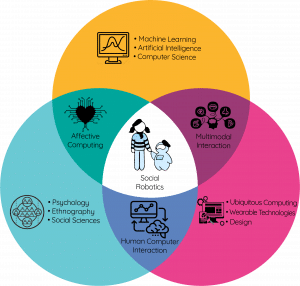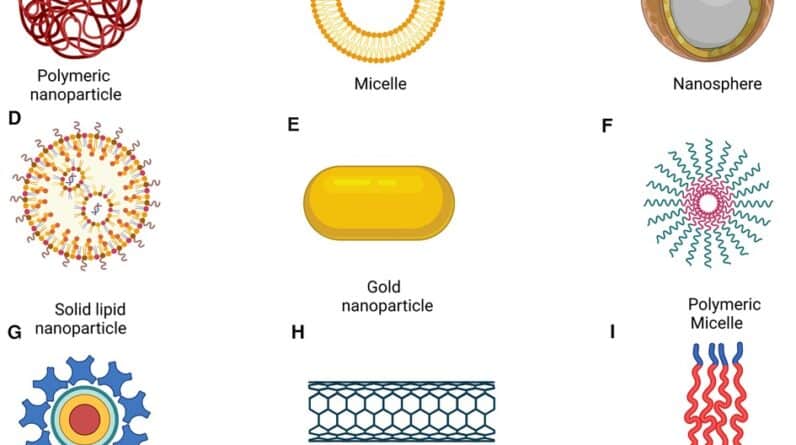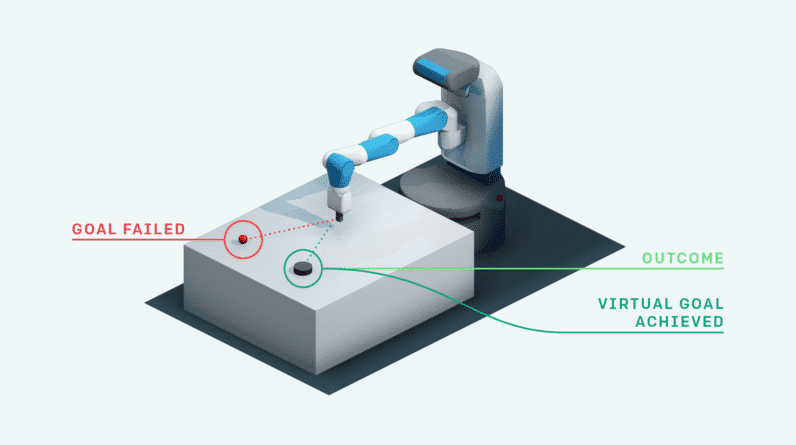In the ever-evolving world of agriculture, artificial intelligence (AI) is making waves, revolutionizing farming and crop management practices like never before. With AI technologies at the forefront, farmers have access to invaluable tools that enhance efficiency, optimize resource allocation, and improve overall productivity. From autonomous drones that monitor crops to predictive analytics that predict optimal planting times, AI is reshaping the way farmers approach their work. Discover how the integration of AI and agriculture is transforming the industry and ushering in a new era of precision farming.

1. Introduction
AI in Agriculture
Artificial Intelligence (AI) has emerged as a transformative technology in various industries, and agriculture is no exception. AI has the potential to revolutionize farming and crop management processes, enabling farmers to enhance their productivity, efficiency, and sustainability. By leveraging AI technologies, farmers can make informed decisions based on accurate data analysis and predictive models.
Benefits of AI in Agriculture
The adoption of AI in agriculture brings numerous benefits for both farmers and the overall industry. Firstly, AI enables precision farming, where farmers can optimize the use of resources such as water, fertilizers, and pesticides, leading to substantial cost savings while reducing environmental impact. Secondly, AI enables better crop monitoring and management by allowing real-time assessment of crop health, enabling timely interventions to prevent disease outbreaks and pest infestations. Additionally, by automating tedious tasks, AI can alleviate the labor shortage in agriculture and improve farm worker safety. Moreover, AI-based analytics and predictive models can assist farmers in making data-driven decisions, enhancing yield prediction accuracy and aligning farm activities with market trends. Overall, AI has the potential to transform farming and crop management practices, leading to more sustainable and efficient agriculture.
2. Automation in Farming
Use of Robots and Drones
AI-powered robots and drones have paved the way for automation in farming. These intelligent machines can perform various tasks such as planting seeds, applying fertilizers and pesticides, and harvesting crops. Robots equipped with computer vision can detect and remove weeds without affecting the crops, reducing the need for herbicides and manual labor. Similarly, drones equipped with high-resolution cameras can capture aerial images of the fields, identifying crop health issues, and assisting in precision agriculture practices. By automating repetitive tasks, robots and drones increase efficiency, decrease labor costs, and improve overall productivity.
Precision Agriculture
Precision agriculture involves the use of AI and advanced technologies to optimize farming practices at the field level. With the help of sensors and GPS technology, farmers can collect real-time data on soil conditions, moisture levels, and crop growth. AI algorithms analyze this data, enabling farmers to precisely apply fertilizers, irrigation, and other inputs, taking into account the specific needs of each section of the field. This targeted approach minimizes resource wastage, maximizes crop yield, and reduces environmental impact. Precision agriculture also facilitates the collection of historical data, allowing farmers to make informed decisions based on trends and patterns.
Automated Equipment
In addition to robots and drones, AI is transforming agricultural equipment, making them autonomous and intelligent. AI-powered tractors, for example, can navigate fields without human intervention, using GPS and computer vision systems to perform tasks such as plowing, planting, and harvesting. These autonomous machines can work continuously, day and night, optimizing efficiency and reducing labor requirements. Moreover, AI algorithms help in equipment maintenance by detecting and predicting potential failures, enabling proactive repairs and minimizing downtime. By embracing automated equipment, farmers can achieve higher productivity, lower costs, and better overall farm management.

3. Crop Monitoring and Management
Remote Sensing
Remote sensing is a crucial application of AI in crop monitoring and management. By utilizing satellites, drones, and sensors, remote sensing technology collects data about crop health, growth, and potential issues. The captured data, including spectral imagery and thermal measurements, is analyzed using AI algorithms to assess the current state of crops. By identifying variations in vegetation indices, farmers can pinpoint regions that require attention, such as nutrient deficiencies, water stress, or disease outbreaks. This timely detection allows for proactive management, leading to improved crop health and reduced yield losses.
Field Monitoring
AI tools enable farmers to monitor their fields remotely and in real-time. Weather stations equipped with sensors collect data on temperature, humidity, wind speed, and rainfall, allowing farmers to optimize their irrigation and fertilization schedules based on current conditions. Furthermore, ground-based sensors measure soil moisture, nutrient levels, and other variables, providing valuable insights for decision-making. AI algorithms process this data, offering recommendations for optimal strategies to maintain crop health. By continuously monitoring soil and weather conditions, farmers can take timely action and prevent potential crop damage.
Predictive Analytics
Predictive analytics is a powerful tool in crop management, helping farmers anticipate future crop outcomes and make data-driven decisions. By analyzing historical and real-time data, AI algorithms can generate models that accurately predict crop yields, disease outbreaks, and pest infestations. These predictions empower farmers to optimize resource allocation, plan for potential issues, and maximize profitability. Moreover, predictive analytics can support supply chain management by forecasting market demand and aligning crop production accordingly. By using AI-powered predictive models, farmers can achieve better crop management and enhance their profitability.
Weed Detection and Management
Weed control is a labor-intensive and challenging task for farmers. However, AI-based solutions are revolutionizing weed detection and management. Using computer vision technology and machine learning algorithms, AI can identify and differentiate between crops and weeds. This enables targeted herbicide application, reducing chemical usage and minimizing crop damage. Some AI-based systems can even employ robotic weeders that selectively remove only the weeds, eliminating the need for large-scale herbicide application altogether. By incorporating AI for weed detection and management, farmers can effectively control weeds, conserve resources, and promote sustainable farming practices.
4. Soil and Water Management
Soil Moisture Monitoring
Maintaining optimal soil moisture levels is crucial for crop health and productivity. AI-based soil moisture monitoring systems utilize sensors and automated irrigation controllers to measure soil moisture and determine irrigation requirements. These systems constantly monitor soil moisture levels in real-time and provide farmers with accurate data on soil moisture content. AI algorithms analyze this data, considering factors such as crop type, weather conditions, and evapotranspiration rates, and recommend precise irrigation schedules. By delivering water when and where it is needed, farmers can avoid water wastage and prevent waterlogging or drought stress, improving overall crop yield and reducing water usage.
Nutrient Management
AI plays a vital role in nutrient management, ensuring that crops receive the required nutrients at the right time and in the right amounts. By analyzing soil and plant data, AI algorithms can assess nutrient deficiencies or excesses and recommend appropriate fertilization strategies. This analysis takes into account factors such as soil nutrient levels, crop nutrient requirements, and the growth stage of the crops. AI-powered nutrient management systems optimize fertilization plans, reducing nutrient losses and environmental pollution. Additionally, by precisely applying fertilizers, farmers can save costs associated with excessive fertilization and achieve better nutrient uptake by the crops.
Irrigation Optimization
Efficient irrigation is essential for maximizing crop yields and conserving water resources. AI-based irrigation optimization systems leverage real-time data and advanced analytics to determine optimal irrigation schedules. By considering factors such as crop water requirements, soil moisture levels, weather forecasts, and evapotranspiration rates, AI algorithms generate irrigation recommendations tailored to specific field conditions. Automated irrigation controllers equipped with AI technology can accurately deliver the right amount of water at the right time, preventing over-irrigation, reducing water wastage, and avoiding water stress in crops. Through AI-enhanced irrigation optimization, farmers can achieve higher irrigation efficiency and sustainable water management.

5. Disease and Pest Control
Early Disease Detection
Early detection of diseases is vital for preventing their spread and minimizing crop losses. AI-based disease detection systems utilize image recognition technology to analyze plant images and identify signs of disease before they become visible to the naked eye. By comparing the captured images with an extensive database of disease symptoms, AI algorithms can accurately diagnose diseases and provide timely alerts to farmers. Early disease detection allows farmers to take immediate action, implementing targeted treatments or adopting preventive measures. By leveraging AI technologies for disease detection, farmers can effectively control diseases, minimize crop losses, and improve overall farm productivity.
Pest Identification and Control
Pests pose a significant threat to crop health and productivity. AI-based pest identification systems help farmers identify specific pests and assess their potential damage to crops. By analyzing images or sound patterns captured in the field, AI algorithms can recognize pest species and develop pest abundance models. This enables farmers to make informed decisions regarding pest control strategies, such as the targeted application of pesticides or the use of natural predators. AI-powered pest identification and control systems reduce reliance on broad-spectrum pesticides, minimize environmental impact, and promote sustainable pest management practices.
AI-based Crop Protection
AI is revolutionizing crop protection methods by enabling precision application of pesticides and reducing chemical usage. AI algorithms analyze various data inputs, including crop health data, weather conditions, pest prevalence, and spray droplet characteristics to determine the optimal dosage and timing for pesticide application. This ensures that the pesticides are applied in a targeted manner, minimizing the amount of chemicals used while maximizing their effectiveness. AI-powered crop protection systems can also differentiate between crops and weeds, selectively applying herbicides without harming the crops. By adopting AI-based crop protection solutions, farmers can reduce their environmental footprint, improve crop quality, and ensure safer food production.
6. Harvesting and Post-Harvesting
Autonomous Harvesting
AI-driven automation extends to harvesting tasks, making the process faster, more efficient, and less labor-intensive. Autonomous harvesting machines equipped with AI technology use computer vision and machine learning algorithms to identify and harvest ripe crops with precision. By automatically detecting crop ripeness, these machines can eliminate manual harvesting errors and minimize damage to crops. Autonomous harvesting reduces labor costs, increases harvesting speed, and improves overall efficiency. With AI-enabled machines, farmers can streamline their harvesting operations, ensuring timely crop collection and minimizing post-harvest losses.
Quality Control and Sorting
AI plays a crucial role in quality control and sorting processes after harvesting. AI-powered imaging systems capture high-resolution images of crops, allowing for detailed inspection and quality assessment. By analyzing these images, AI algorithms can detect defects, such as bruises or fungal infections, ensuring that only high-quality produce reaches the market. Additionally, AI enables automated sorting of harvested crops based on size, shape, color, and ripeness. This ensures consistent product quality and enhances market competitiveness. With AI-driven quality control and sorting systems, farmers can deliver superior produce, reduce waste, and optimize market value.
Storage and Logistics Optimization
Efficient storage and logistics management are vital for preserving crop quality and minimizing post-harvest losses. AI-driven systems help optimize storage conditions by monitoring factors such as temperature, humidity, and ethylene levels. AI algorithms analyze the collected data and provide real-time insights and recommendations for maintaining optimal storage conditions. By ensuring the right storage conditions, such as temperature and humidity, farmers can extend the shelf life of their produce. AI also enables improved logistics optimization by analyzing various factors such as transportation routes, vehicle capacity, and market demand. With AI-powered storage and logistics management systems, farmers can reduce post-harvest losses, minimize wastage, and maximize the value of their crops.

7. Data-driven Decision Making
AI-powered Analytics
Data-driven decision making is a key advantage of AI in agriculture. AI-powered analytics platforms collect and analyze vast amounts of agricultural data, providing actionable insights to farmers. By integrating data from various sources, such as weather data, soil data, crop health data, and market data, AI algorithms can generate valuable recommendations and predictions. These AI-powered analytics platforms enable farmers to make informed decisions regarding resource allocation, crop management strategies, and market trends. With data-based insights, farmers can optimize productivity, enhance profitability, and ensure sustainable farm management.
Crop Yield Prediction
Accurate crop yield prediction is essential for effective planning and decision making. AI techniques, such as machine learning and data mining, enable accurate crop yield forecasting based on historical and real-time data. By analyzing factors such as weather patterns, soil conditions, crop health, and management practices, AI algorithms can generate models that predict crop yields with high accuracy. These predictions help farmers optimize resource allocation, such as labor and machinery, and plan for market demand. By leveraging AI for crop yield prediction, farmers can improve their operational efficiency, reduce waste, and maximize their financial returns.
Market Trends Analysis
Understanding market trends is critical for successful farm management. AI-powered market trends analysis platforms collect and analyze data on consumer preferences, market demand, price fluctuations, and competition. By identifying patterns and correlations within this data, AI algorithms can provide farmers with valuable insights into market trends, enabling them to make informed decisions regarding crop selection, pricing, and distribution strategies. AI-powered market trends analysis platforms help farmers adapt to changing market dynamics, maximize profit, and stay competitive in the industry.
8. Farm Management Systems
Farm Productivity Optimization
AI-driven farm management systems help optimize productivity by integrating data and analytics across various farm operations. These systems collect data from different sources, such as sensors, drones, and machinery, and analyze it using AI algorithms. By considering factors such as weather conditions, soil health, crop growth, and market trends, these systems provide real-time insights and recommendations to farmers. AI-powered farm management systems enable farmers to streamline their operations, allocate resources efficiently, and implement effective strategies to maximize productivity.
Resource Allocation and Planning
Efficient resource allocation and planning are essential for farm profitability and sustainability. AI-based farm management systems help farmers optimize resource allocation by analyzing data on labor availability, equipment utilization, and crop requirements. By considering these factors, AI algorithms can recommend optimal resource allocation strategies, ensuring that resources are distributed effectively and waste is minimized. Additionally, AI-powered farm management systems facilitate long-term planning by analyzing historical data and generating predictions and recommendations. Through effective resource allocation and planning, farmers can enhance their operational efficiency, reduce costs, and achieve sustainable farm management.
Farm Automation Integration
AI technology enables seamless integration of farm automation systems, streamlining various processes and improving efficiency. AI-powered farm management systems can integrate and control autonomous machines, robots, and sensors, enabling farmers to automate tasks such as planting, irrigation, harvesting, and monitoring. These systems synchronize the operations of different machines, ensuring optimal performance and reducing inefficiencies. By embracing AI-based farm automation integration, farmers can improve productivity, reduce labor costs, and enhance overall farm management.

9. Challenges and Limitations
Data Privacy and Security Concerns
The adoption of AI in agriculture raises concerns about data privacy and security. Collecting and analyzing large amounts of agricultural data involves sensitive information, such as soil composition, crop health data, and market data. It is crucial to establish robust data privacy policies and implement secure data management systems to protect farmers’ data from unauthorized access or misuse. Additionally, collaboration between farmers and AI providers is essential to ensure the secure and ethical use of data in agricultural AI applications.
High Initial Costs
Implementing AI technologies in agriculture often involves high initial investments. The cost of acquiring and integrating AI-powered robotics, sensors, drones, and analytics platforms can be a significant barrier for many farmers, especially small-scale farmers. However, as the technology evolves and becomes more widespread, the cost is expected to decrease. Governments, agricultural organizations, and technology providers can play a role in supporting farmers by offering financial incentives, subsidies, and training programs to facilitate the adoption of AI in agriculture.
Lack of Technical Expertise
To fully harness the potential of AI in agriculture, farmers need to have the necessary technical skills and knowledge. However, not all farmers possess the expertise required to implement and manage AI technologies effectively. Training programs and educational initiatives can help bridge this knowledge gap, providing farmers with the necessary skills to operate and maintain AI-powered systems. Collaboration between agricultural institutions, technology providers, and farmers is vital in promoting the adoption of AI and ensuring that farmers can leverage its benefits.
10. Future Outlook and Conclusion
Emerging Technologies in AI and Agriculture
The future of AI in agriculture is promising, with several emerging technologies expected to further transform farming practices. One such technology is the Internet of Things (IoT), which enables the integration of sensors and devices for real-time data collection and analysis. AI-powered blockchain solutions also hold potential in ensuring traceability, transparency, and security in agricultural supply chains. Furthermore, advancements in machine learning and deep learning algorithms will continue to enhance the accuracy and efficiency of AI applications in agriculture. As these technologies continue to evolve, farmers can expect even more advanced AI solutions to address agricultural challenges effectively.
Sustainable Farming Practices
AI has the potential to play a significant role in promoting sustainable farming practices. By optimizing the use of resources, minimizing chemical inputs, and reducing waste, AI-powered systems contribute to sustainable agricultural production. Precision agriculture practices enabled by AI help conserve water, prevent soil erosion, and reduce environmental impacts. Additionally, AI-based disease and pest control solutions minimize the reliance on broad-spectrum pesticides, promoting ecological balance and biodiversity. The adoption of AI in agriculture aligns with global efforts to achieve sustainable development goals and ensure a secure food supply while preserving the environment for future generations.
Role of AI in Food Security
As the global population continues to grow, ensuring food security becomes a paramount concern. AI is poised to play a crucial role in addressing this challenge. By increasing agricultural productivity, optimizing resource allocation, and improving crop management practices, AI can help meet the growing demand for food. Precision agriculture enabled by AI mitigates the risks associated with climate change, limited arable land, and water scarcity. Through AI-powered analytics and predictions, farmers gain insights into market trends and consumer demands, allowing them to align their production accordingly. By embracing AI in agriculture, we can enhance global food security and build a sustainable future.
In conclusion, AI is transforming farming and crop management practices, revolutionizing the agricultural industry. From automation in farming to crop monitoring and disease control, AI helps optimize resource allocation, enhance productivity, and promote sustainability. Despite challenges such as data privacy concerns and initial costs, the benefits of AI in agriculture are vast. As emerging technologies continue to evolve and with collaborative efforts from stakeholders, AI has the potential to unlock new frontiers in food production, ensuring a secure and sustainable future for agriculture.






